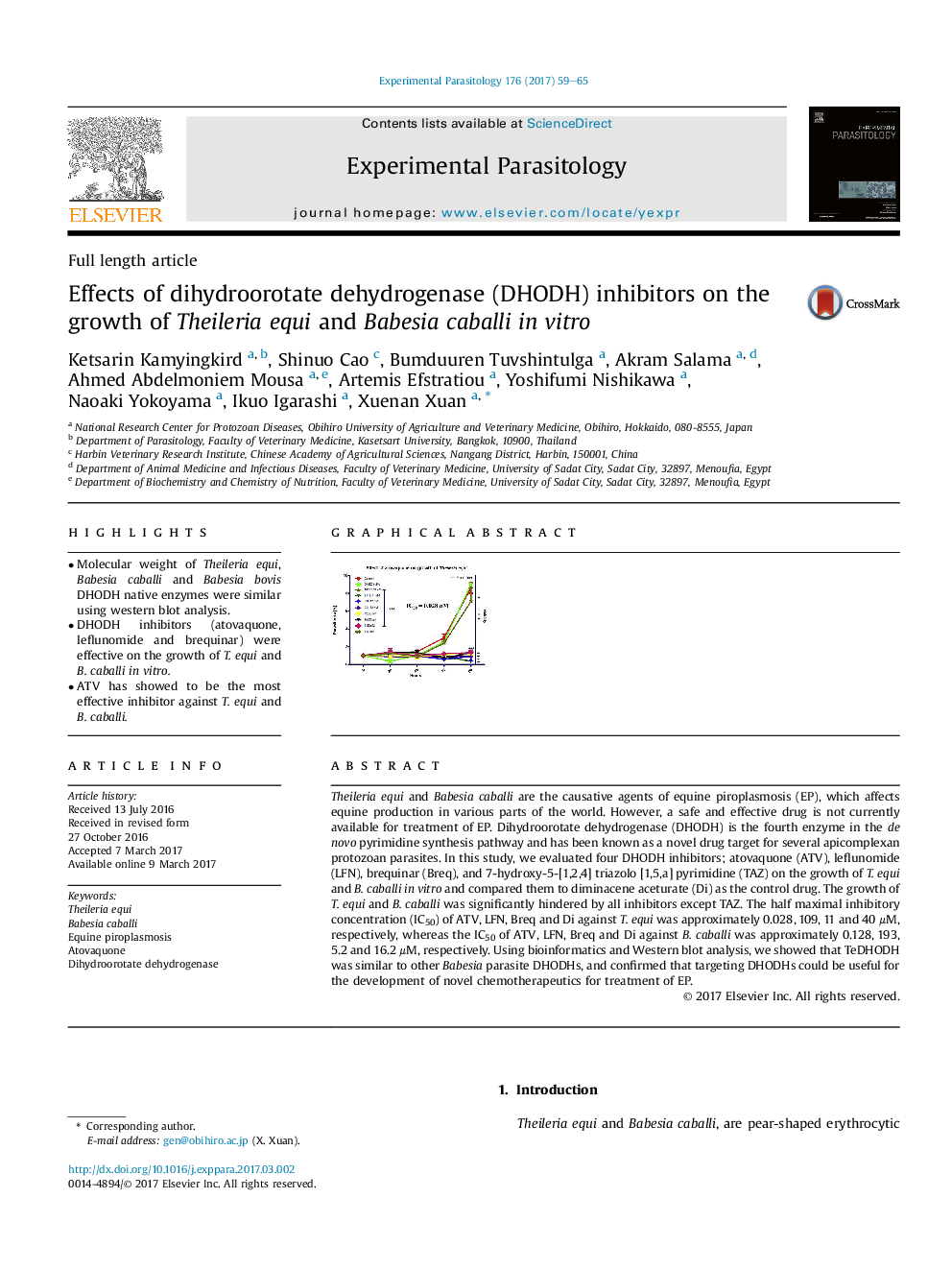| کد مقاله | کد نشریه | سال انتشار | مقاله انگلیسی | نسخه تمام متن |
|---|---|---|---|---|
| 5741127 | 1616989 | 2017 | 7 صفحه PDF | دانلود رایگان |

- Molecular weight of Theileria equi, Babesia caballi and Babesia bovis DHODH native enzymes were similar using western blot analysis.
- DHODH inhibitors (atovaquone, leflunomide and brequinar) were effective on the growth of T. equi and B. caballi in vitro.
- ATV has showed to be the most effective inhibitor against T. equi and B. caballi.
Theileria equi and Babesia caballi are the causative agents of equine piroplasmosis (EP), which affects equine production in various parts of the world. However, a safe and effective drug is not currently available for treatment of EP. Dihydroorotate dehydrogenase (DHODH) is the fourth enzyme in the de novo pyrimidine synthesis pathway and has been known as a novel drug target for several apicomplexan protozoan parasites. In this study, we evaluated four DHODH inhibitors; atovaquone (ATV), leflunomide (LFN), brequinar (Breq), and 7-hydroxy-5-[1,2,4] triazolo [1,5,a] pyrimidine (TAZ) on the growth of T. equi and B. caballi in vitro and compared them to diminacene aceturate (Di) as the control drug. The growth of T. equi and B. caballi was significantly hindered by all inhibitors except TAZ. The half maximal inhibitory concentration (IC50) of ATV, LFN, Breq and Di against T. equi was approximately 0.028, 109, 11 and 40 μM, respectively, whereas the IC50 of ATV, LFN, Breq and Di against B. caballi was approximately 0.128, 193, 5.2 and 16.2 μM, respectively. Using bioinformatics and Western blot analysis, we showed that TeDHODH was similar to other Babesia parasite DHODHs, and confirmed that targeting DHODHs could be useful for the development of novel chemotherapeutics for treatment of EP.
214
Journal: Experimental Parasitology - Volume 176, May 2017, Pages 59-65